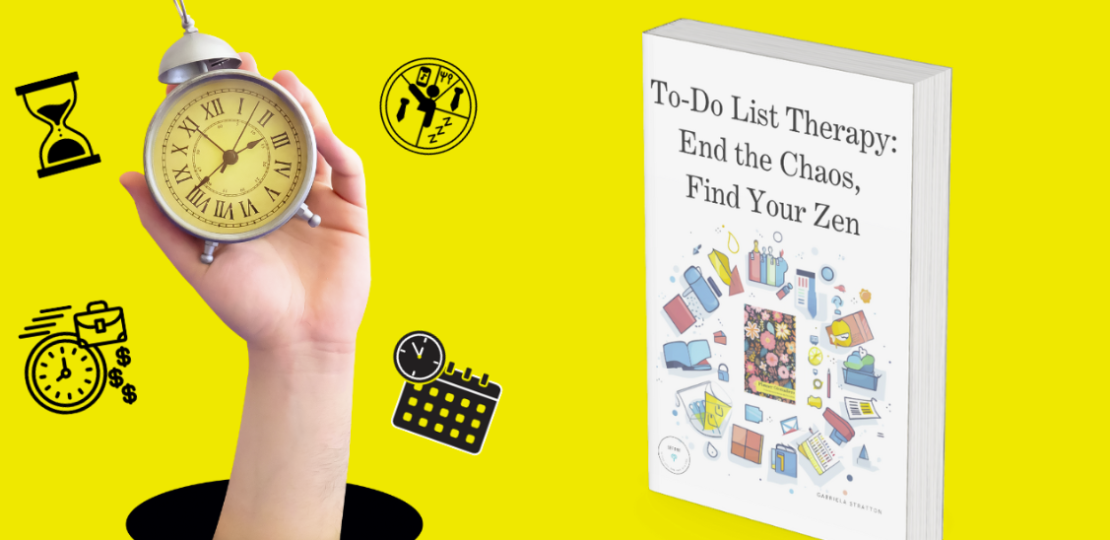Transform Your Day with To-Do List Therapy: The Ultimate Productivity Hack
November 3, 2024 | by TPN Team

Productivity between Myth and Legend
Productivity is about working smarter, not harder. It means maximizing output and progress by using your time, energy, and effort as efficiently as possible. Whether at work, school, or home, you want to ensure you spend time on high-impact activities aligned to your priorities versus low-value busy work. Having a well-organized and effective todo list can greatly assist in this endeavor. That’s the goal of the todo list ToDo List Therapy: End the Chaos, Find Your Zen
In today’s high-speed, digitally-driven world, productivity matters more than ever. Without discipline and structure, it’s easy to slip into distraction and reactionary mode. Email, social media, and smartphones have created disruptions that fracture people’s time and attention. This leads to chronic stress as days feel scattered and meaningful work never gets done. Additionally, the boundaries between work and life have blurred. With remote work replacing rigid office schedules, many knowledge workers need help to balance availability with time for focused efforts. The result is shallow work displaces deep work, taking a toll on innovation and creativity.
Taking Charge of Your Time and Attention
At its core, being productive means taking charge of your time rather than letting it control you. With so many potential distractions and competing demands, intentionality is required to guard your most limited resource. A few fundamental shifts can make an enormous difference in spending your hours focused on what’s truly meaningful and important. This is where having a system like a daily todo list can drive productivity. Recording your tasks acts like a compass, pointing your days in the optimal direction based on thoughtful planning. Combining this with time management techniques like the Pomodoro method enables you to work smarter by segmenting time into productive intervals separated by rejuvenating breaks. Together, these two productivity tools reinforce structure, focus, and intentionality. A todo list provides clarity on priorities and responsibilities. Time management carves order from chaos by budgeting set time blocks for important tasks without overscheduling.
Approaching days this way prevents busyness for the sake of busyness. You thoughtfully plan where to invest your limited energy based on what matters. This ultimately reduces stress while driving higher value output. And practicing this discipline builds time management muscles that transfer to life outside of work. Controlling your time and attention is a competitive advantage in a complex world full of distractions. With so many vying for your minutes, hours, and days, you must become CEO of your own life. Productivity is the mindset shift that enables you to work smarter, create focus amid chaos, and make progress on your biggest goals and priorities day after day. And this eBook and the todo list notebook are an excellent compendium for your journey.
Types of Productivity
Productivity is a broad concept that refers to how efficiently people manage their time and activities to maximize output and progress. There are several definitions and types of productivity, and understanding them is critical to developing an approach that works for you.
Personal productivity focuses on the activities an individual does for themselves. This includes self-improvement through learning new skills, physical health and wellness, and general life management. Being productive in your personal life might involve exercising regularly, reading books, taking online courses, or preparing meals. The emphasis is on growth and development as a human being. This is an example for students.
Workplace productivity zeros in on job-related tasks and responsibilities. It covers time management, project planning, process improvement, collaboration, and completing deliverables. In a work context, productivity means accomplishing more high-value activities in less time to boost performance.
Domestic productivity involves managing daily home-related duties like cleaning, cooking, errands, and childcare. Being productive at home means maintaining order and efficiency to keep the household running smoothly.
Finally, creative productivity focuses on expressing oneself through artistic outlets like writing, music, painting, or other crafts. It fulfills the human need to create an outlet for imagination and self-actualization.
Balancing Productivity: Quantitative vs Qualitative Approach
In general, there are two overarching types of productivity: quantitative and qualitative according to ToDo List Therapy: End the Chaos, Find Your Zen:
Quantitative productivity centers on the volume of tasks completed. Qualitative productivity focuses on the value derived from activities based on alignment with goals and priorities. For example, writing ten emails in an hour demonstrates quantitative productivity. However, it isn”t necessarily qualitative if the emails weren’t a high priority. Conversely, you may only write one email in an hour, but if it secures a major client, that demonstrates high qualitative productivity.
Understanding the spectrum of productivity definitions allows customizing an approach that works for your objectives. The idea is to balance quantity and quality across the different facets of life—personal, professional, and creative—to maximize time, output, satisfaction, and meaning.
Continue your reading journey downloading Gabriela’s free eBook ToDo List Therapy: End the Chaos, Find Your Zen — it’s on the house!
If you want to apply the techniques described by Gabriela in a specialized notebook for your productivity, you can find it here:
RELATED POSTS
View all


